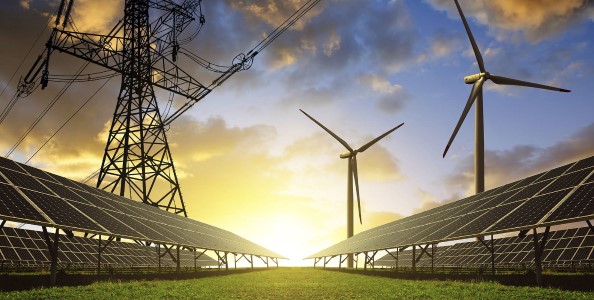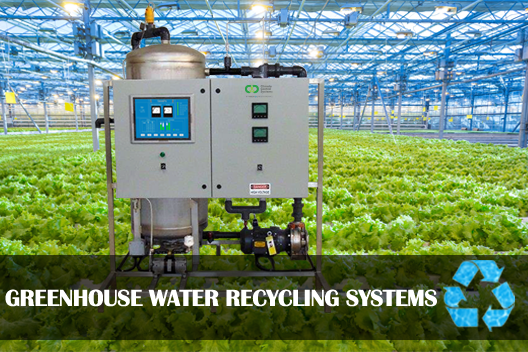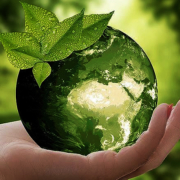Think BIG – Big Island Green, that is …
Several Hawaii Island community voices have joined Tam Hunt in developing a vision for the island (and by extension the state), a vision which firmly places Hawaii on a path to a sustainable future, and a way to find its footing in the re-boot of the state and Hawaii County’s embattled economy.
How to restart the kamaaina economy, improve resilience, self-sufficiency, and reduce our environmental footprint
Hawaii’s residents are facing economic devastation not seen since the Great Depression. Federal stimulus funds are helping to soften the blow but the $1,200 payments to individuals, and the $600 weekly increase in unemployment benefits are set to run dry by end of July.
Tourism, a critical cog in our economic engine, will likely lag for many quarters, and the threat of subsequent global COVID-19 infection waves will likely result in prolonged social distancing norms that will impact school schedules, affect work schedules, and decrease the productivity of local businesses.
What are we to do keep Hawaii Island afloat?
We are indeed at a historic place and time where an economic transformation of Hawaii is warranted, an opportunity for a 21st century New Deal specific to Hawaii’s needs. Even before the pandemic a lot of discussion had taken place locally, statewide and nationally about a Green New Deal, which would combine much-needed jobs programs, stimulate local economic activity, enable net zero carbon emissions, improve social equity, and save the environment.
Hawaii’s recent statewide experiment, from 2012 to 2016, in rooftop solar energy and net metering (NEM) created a statewide economic renaissance, producing the fastest economic growth for Hawaii in decades, created thousands of well-paying local jobs, new solar businesses, saved utility ratepayers substantial dollars, which flowed back into the local economy, and produced a lasting effect in advancing statewide solar energy independence. This is a good example of smart policy.
What would a Green New Deal look like on the Big Island, led by local people and the county government? What would it mean to “think B.I.G.” (Big Island Green)?
County Research & Development have recently issued a draft Climate Action Plan with many great ideas. It’s a full-spectrum look at what the island will need to do to meet the statewide 100% renewable energy mandate by 2045, including solid waste management. It will also set the stage for the county to meet the 2017 declaration by Hawaii’s Mayor’s for the county to achieve 100% renewable ground transportation by 2045.
But a Green New Deal for the Big Island could advance the current 2045 goal of 100% clean and renewable energy for the state to 2030 or 2035 for our county. Think B.I.G. would be a job generator based on green energy, robust local agriculture, smart buildings, smart communities, electric vehicles and public transit, composting programs, public trails and expanded parks, improved water systems, and many other 21st century infrastructure activities. Most of these initiatives will save money and our unemployed need large numbers of new jobs in the near-term.
Aina Aloha is a new group of Hawaiian community members, businesses and organizations, rethinking Hawaii’s economy in light of the pandemic. Their declaration includes a list of guiding principles, the first of which states:
- We are of and from this ʻāina that ultimately sustains us. We employ strategies for economic development that place our kuleana to steward precious, limited resources in a manner that ensures our long-term horizon as a viable island people and place.
Our hope is that Think B.I.G. serves the principles described by Aina Aloha. Here’s a partial list of what thinking B.I.G. for the Big Island could look like. These examples are meant only to spur community discussion at this point:
Clean Energy Independence
- A commitment by the County itself to achieve 100% green energy for all of its operations (electricity, heating and transportation) by 2030
- A study of all County properties and parks for solar potential on rooftops, parking lots and other areas that can now be cost-effectively be solar powered

- Install hundreds of electric vehicle chargers, with solar canopies and batteries, on County facilities and public parks to charge County vehicles and public vehicles from the Sun (“driving on sunshine”), and enable grid resiliency.
- Install commercial and community microgrids for improved resiliency and grid support
- Complete study to determine alternative geothermal energy sites, and tidal/ocean energy sites, on and around the island
- A commitment by the County to retrofit all County buildings to achieve either LEED (Leadership in Environmental and Energy Design) certification or Zero Net Energy with a combination of energy efficiency and solar technologies
- Community solar facilities for all apartment buildings with roof space or parking lots for solar
- Community wind power for areas that have decent wind resources and are otherwise suitable for small and medium-size wind turbines
- Robust rebate programs, working with Hawaii Energy, HELCO and the state Public Utilities Commission, for energy efficiency, solar water heating, roof top solar, electric vehicle and charger purchases, and other green-energy retrofits
- Install methane capture and power generation technologies at county sewage treatment plants and parks with composting toilets.
- Job training programs for solar technicians, energy efficiency technicians, green agriculture, and land stewardship
Local agriculture and permaculture
- Improve local food independence through regenerative agriculture and permaculture design

- Support programs for local agriculture of all sizes with focus on the local food economy rather than the international export economy; farmer trainings; workshops; nurseries; seed banks and libraries
- Compost and mulching programs in every community
- Creation of food aggregation and distribution hubs following the model of Kahumana farms on Oahu
- Identify County properties that could be re-purposed for community gardens and farmlands with low lease rates to encourage new farmers
Waste programs
- Community led design sessions to help identify and implement improved recycling and upcycling opportunities

- Implement zero waste education and practices in all public schools
- Community led design sessions to identify better mid-term and long-term waste management solutions
- Assess the viability of industries related to extending the life of solar panels and batteries, and the recycling of these materials at their end-of-life
- Recycling waste water for irrigation
Parks and trails
- Create a series of interconnected bike trails and bicycle friendly roads across the island, reducing vehicle traffic and encouraging bicycle tourism
- Trail building programs in areas that are suitable for new trails, like county, state and national parks, and forest reserves
- Expand existing parks where appropriate, providing additional green space, species conservation and recreation
- Improve and expand park facilities like basketball courts, tennis courts, keiki play areas, community centers, etc.
- Identify public parks that can host food forests and community gardens and hand over management of those spaces to community groups, reducing the labor burden of county workers
Education
- Robust education and outreach programs to alert the public to rebates, job programs, and other aspects of Think B.I.G.
- Connect Big Island programs to statewide programs working on green energy, waste, local agriculture and other Green New Deal programs
- Encourage education curricula designed for careers in renewable energy, battery and fuel-cell vehicles, regenerative agriculture, waste management, parks maintenance, and recycling.
- These programs, if implemented in the next few years, would provide literally tens of thousands of new jobs on our island, while also making the Big Island even more enjoyable to live on, and reducing our environmental footprint. Hawaii island has the potential to serve as a model for the rest of the world and foster a new brand of environmentally responsible tourism.
- And the last major benefit would be a dramatic improvement in our resilience against disasters of all types.
Paying for all of this
How will all this be paid for? There are a number of possible funding options, including:
- Federal stimulus (CARES) funding to state and local governments, which currently is earmarked only for coronavirus response, but will almost certainly be expanded for recovery use before long

- State Capital Improvement Program (CIP)
- Foundation funding — many community, state and federal foundations will be looking for community-level leadership and Hawaii County can offer that.
- Federal or state community block grants
- County or state bond measures — if any time warrants bonds to be issued this is it
- Private – Public Sector investment partnerships
Additional funding, possibly a large part, can come from 3rd party investment – companies that are willing to build the infrastructure and reap the revenue from the energy generated or saved.
When all is said and done we on the Big Island can’t afford to not fund the economic and social benefits of a forward-moving B.I.G. initiative.
Tam Hunt is a Big Island resident and the chief executive of Community Renewable Solutions, LLC. Hunt is also an attorney with substantial regulatory and policy experience directed to renewable energy and transportation electrification projects in California and Hawaii. He was previously a UC Santa Barbara lecturer and expert on climate change law and policy and renewable energy law and policy.




This is the time for re-thinking our economic path and for creating local solutions. The B.I.G. plan makes a lot of sense. We need to address energy, transportation, food, and water in a holistic sense.
There are just two points that need elaborating.
First, we don`t have sufficient tidal forces, only ocean wave action.
Second, it is important that the phrase — “enable net zero carbon emissions” — means the entire lifecycle emissions, rather than excluding some emissions and/or exporting emissions.
Henry Curtis
Life of the Land
We invite our subscribers to also see a related story of interest in “Hawaii Today” which features the talk story “Hawaii + Tourism”, as we explore the question … instead of chasing the past, there is at this moment the opportunity for transformation, an economic re-boot of the state to a 21st century economy, based on an independent, self-sufficient, and sustainable clean energy economy.
Also need to think BIG with tiny houses which implies some reformation of building codes and land use and zoning regulations. One local enterprise (Naalehu!) making progress in this area is ‘stargazerindustries.com’.
They have secured county approvals for lower costing, well engineered mobile tiny homes suitable for farm worker housing, downsizing retirees, and potentially small intentional communities and cluster housing.
There is a powerful third party financing tool that can help Hawaii County move down the path of a Green New Deal. It is called Energy Saving Performance Contracting. The Hawaii State Energy Office keeps a pre-approved list of contractors who have already gone through a competitive process which makes it plug and play for the County. These ESCOs come in and put a package together, they handle all the construction management, and they guarantee the savings with monitoring and verification procedures built in. So, you create energy savings by installing LED lighting, energy efficient HVAC equipment, pumps, motors, and can even install solar panels and the package self-finances over time. No upfront cost. Both Honolulu and Maui are moving forward and we need to support this for the Big Island. Create green jobs and leverage the power of ESPC financing to address our public infrastructure needs.